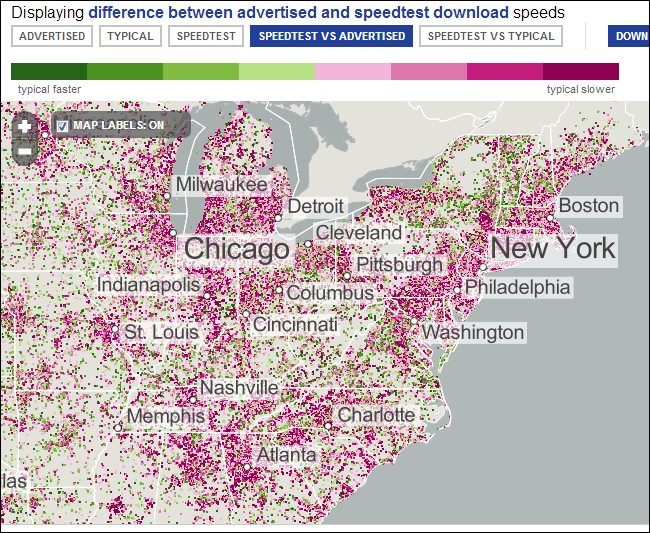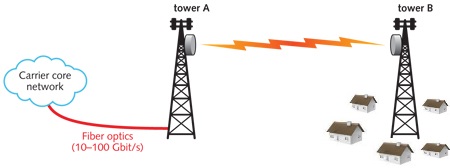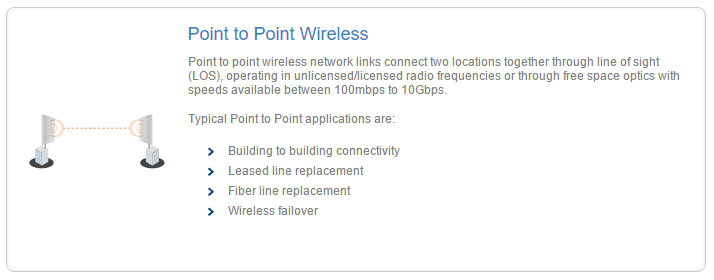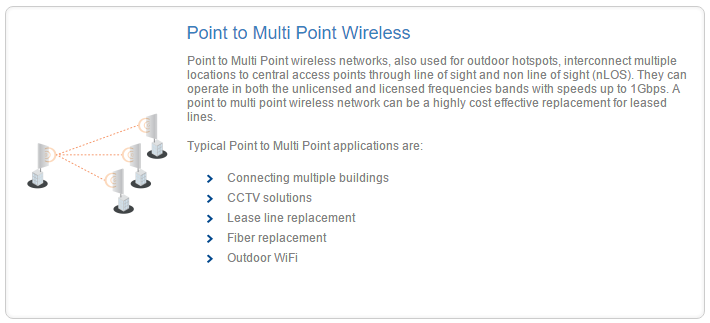Why You Probably Aren’t Getting the Internet Speeds You’re Paying For (and How to Tell)
Article from How-To Geek
Published 06/15/2013
| Chris Hoffman is a technology writer and all-around computer geek. He's as at home using the Linux terminal as he is digging into the Windows registry. Connect with him onGoogle+. |

Have you ever noticed that your Internet service provider advertises their speeds as “up to” a maximum speed? You may think you’re paying for a 15 Mbps connection, but you’re actually getting an “up to 15 Mbps” connection that may be slower.
We’ll look at why actual speeds differ from advertised speeds and how you can identify whether you’re actually getting the Internet connection speeds you’re paying for.
Actual vs. Advertised Speeds: Hard Data
Data showing that most people are getting slower broadband speeds than they’re advertised is easy to find. To get this data, all someone has to do is run a speed test on their connection and compare the actual results to the advertised speeds. In most cases, the speeds are slower.
If you’re curious about Internet speeds in the US, you can view the official US government National Broadband Map site and compare “SpeedTest vs. Advertised” to view the difference between actual speed tests and advertised speeds on a map. All the purple and pink dots are slower than advertised, while the light green dots are areas which match their advertised speeds.
The map appear to be primarily dark purple and pink — it’s clear that most people are getting slower speeds than they were advertised. Faster speeds than advertised, which are dark green, are even harder to find.

advertised speed tests
What Causes Slow Downs
So why exactly do so few people get the advertised speeds? Well, it’s obviously true that Internet service providers have an incentive to be as optimistic as possible with their numbers, but it’s not just misleading marketing. There are other factors involved:
- End-User Hardware Issues: If you have an old router that just can’t keep up with modern speeds or a poorly configured Wi-Fi connection that’s being slowed down by interference, you won’t actually experience the connection speeds you’re paying for — and that’s not the Internet service provider’s fault.
- Distance From ISP: The further you are away from your Internet service provider’s hardware, the weaker your signal can become. If you’re in a city, you’re likely to have a faster connection than you would in the middle of the countryside.
- Congestion: You’re sharing an Internet connection line with many other customers from your Internet service provider, so congestion can result as all these people compete for the Internet connection. This is particularly true if all your neighbors are using BitTorrent 24/7 or using other demanding applications.
- Time of Day: Because more people are probably using the shared connection line during peak hours — around 6pm to midnight for residential connections — you may experience slower speeds at these times.
- Throttling: Your Internet service provider may slow down (or “throttle”) certain types of traffic, such as peer-to-peer traffic. Even if they advertise “unlimited” usage, they may slow down your connection for the rest of the month after you hit a certain amount of data downloaded.
- Server-Side Issues: Your download speeds don’t just depend on your Internet service provider’s advertised speeds. They also depend on the speeds of the servers you’re downloading from and the routers in between. For example, if you’re in the US and experience slowness when downloading something from a website in Europe, it may not be your Internet service provider’s fault at all — it may be because the website in Europe has a slow connection or the data is being slowed down at one of the routers in between you and the European servers.
Many factors can impact Internet connection speed, and it’s hard to know which is the precise problem. Nevertheless, in real-life usage, you’ll generally experience slower speeds than your Internet service provider advertises — if only because it’s so dependent on other people’s Internet connections.
Measuring Your Internet Connection Speed
You can attempt to measure your Internet connection speed by usingthe SpeedTest website. Select a nearby server and SpeedTest will establish a connection to it, trying to download the file as fast as it can. It also attempts to upload data, testing your upload speed. This gives you a good idea of the speed your Internet service provider is giving you, as the SpeedTest servers are chosen because they can deliver very fast speeds. Using a nearby server allows you to test a more direct connection, with minimal interference from third-party routers — for example, if you choose a SpeedTest server on the other side of the world, you’ll almost certainly experience slower speeds.

Check your connection speeds at different times, including at peak hours and off. They may fluctuate over time.
If your connection speeds aren’t as advertised, there’s not much you can do. You may be able to upgrade your router or tweak your router’s settings to minimize Wi-Fi interference, but ISPs probably won’t listen to you if you call and assert that you need to be getting a faster speed. The speed is advertised as “up to” for a reason.
Sports brands | Marki







